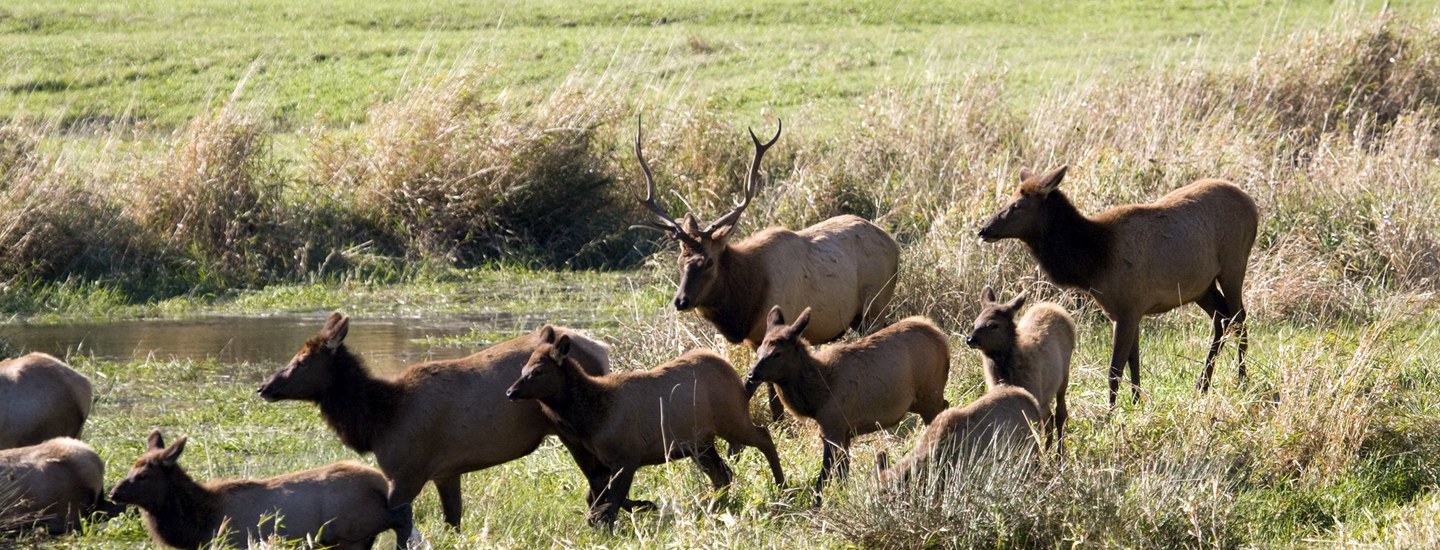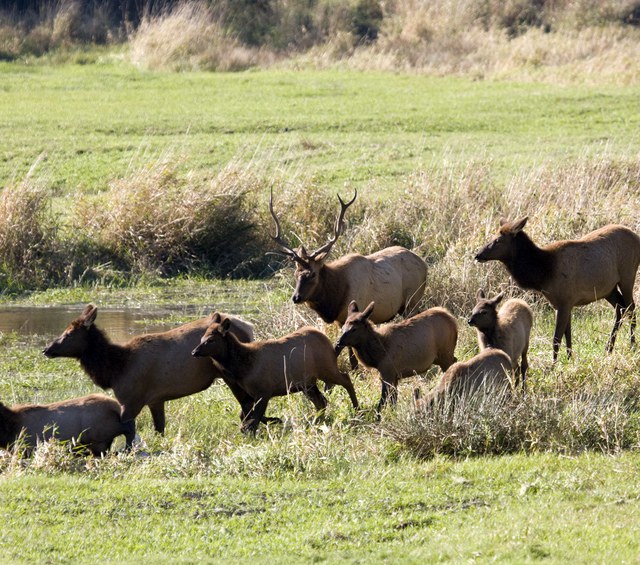What is migration?
First of all, what is migration? Migration is when a species of animal moves from one place to another. Animals usually do this to move to areas that are warmer in the winter or cooler in the summer, where there is more food, and where temperatures are more moderate for raising their young. Migration is different from other kinds of animal movement because it happens seasonally, and animals don’t leave one place and stay in a new location: they move back and forth between two different “home” areas.
Why migrate?
As we learned above, animals usually move to new locations to get access to more food. Most animals that migrate are plant eaters, and move according to when their favorite foods are available. By moving, animals increase the likelihood that they will have enough to eat throughout the year. Leaving a place for a while also reduces the chance of overeating from a particular area and harming plant populations, so they’ll still be around to snack on next year!
Migration also increases the health and survival of young animals. Animals who move can encounter new fit breeding partners, and their young are born in areas with plentiful food and away from predators.
How do animals know when to go?
Different animals rely on different signals to know when it is time for them to migrate. Some use daylight, where longer or shorter days tell them it’s time to move along! This is called “photoperiodism,” which means an organism’s response (-ism) to the amount (period) of light (photo) in each day.
Other animals move when temperatures get too warm or too cold, or when fat reserves in their bodies reach a certain amount. Still other animals follow their own internal calendars, called circadian (which means daily) or circannual (which means yearly) rhythms. Scientists aren’t entirely sure exactly how these brain calendars work, but humans have them too—even though we don’t usually use them for migration!
How do animals know where to go?
Scientists also aren’t entirely sure how animals find their way, but there are several theories. Different animals probably navigate in different ways, and some animals may use multiple different signals to know where to go!
Some animals may use landmarks, like streams, or in the case of gray whales, the entire North American continent! Other animals are suspected, like old-time sailors, to use the light or position of the sun, moon, and stars to orient themselves. Some animals may find their way by scent, and some are believed to use the magnetic field of the Earth itself!
What we do know for sure is that moving from place to place has helped animals to survive their changing environments.
And, animal migration changes the places they live in too! As animals move across the land, air, and water, they bring seeds, materials, and nutrients from the plants and other places they have encountered on their journey. This can help repopulate plant species after a wildfire, and introduce valuable fertilizer to soils.
Animal migrations are an important part of what it means to have healthy lands and waters, and that’s why the Land Trust has partnered to develop wildlife crossings in our region. These wildlife corridors will protect animals—and vehicles!—from collisions on roadways during their seasonal journeys.
We have many animals that migrate into or through Oregon annually, including elk, pronghorn, many varieties of birds, and of course, Monarch butterflies! You can learn more about these animals through other blog posts on our website.
Learn More:
- Elk Rutting Season is Here
- The Speedy and Impressive Pronghorn
- Get Excited for Spring Bird Migrations!
- Monarch Butterflies Need Your Green Thumb
- Fencing to Help Wildlife Thrive
- Why is winter range important for wildlife?
- Helping Wildlife Cross Safely
Sources:
- How Animal Migration Works, HowStuffWorks
- Why do so many animals migrate?, Monteith Shop
- Why do Animals Migrate?, Better Planet Education
- How and Why Animals Migrate, NatureWorks
- Migration, National Geographic


